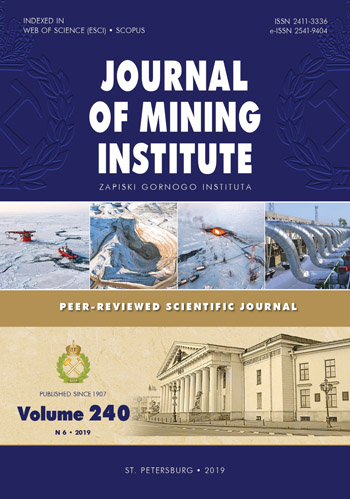Optimization of geometrical parameters of the hydro-cyclone inertial Venturi separator
- 1 — Ural State Mining University
- 2 — Ural State Mining University
- 3 — Ural State Mining University
Abstract
The usage of nanosized particles as modifying agents opens new possibilities in the creation of materials with unique properties. The effective qualitative improvement of Russia's GDP structure is based on the recycling of technogenic mineral formations (TMF) and the production of high-tech products. Numerous studies have shown that the efficiency of this process is limited by high requirements to the fractional composition, median size, and dispersion of TMF particles, as well as imperfection of equipment and technology and their classification. The strict classification requirements must be taken into account, when developing separation methods for the dispersion of the median sizes of TMF microparticles under the conditions of the probabilistic distribution of the physical and mechanical parameters of the feed. The studies covered in the article are based on the provision on a significantly greater influence of inertial forces on the trajectory of a hydrodynamically unsteady motion of the dispersed «a microparticle – a drop of liquid» system during the hydro-cyclone separation with respect to the aerodynamic forces of their movement in a fluidized bed. The paper shows that within the range of kinetic energy of the translational motion of liquid droplets, which overcomes the aerodynamic barrier of coagulation of hydrophobic TMF particles, the minimum diameter of absorbed microparticles during hydro-cyclone coagulation depends only on the magnitude of the angular velocity of rotation of the liquid droplets. We obtained the equations for the Euler and Reynolds criteria, their average values, and the relaxation time of liquid droplets with integrated micro and nanoparticles of TMF, depending on their median size during hydro-cyclone separation. The developed mathematical model of inertial hydro-cyclone separation of finely dispersed TMF allows determining the optimal geometric parameters and energy characteristics of the Venturi separator, its aerator, and the position of the receiving tanks. The experimental results confirmed the possibility of classifying finely dispersed wastes of mining and metallurgical production in the range of median sizes (0.5-5)∙10–6 m by fractions with a dispersion of not more than 20 %.
